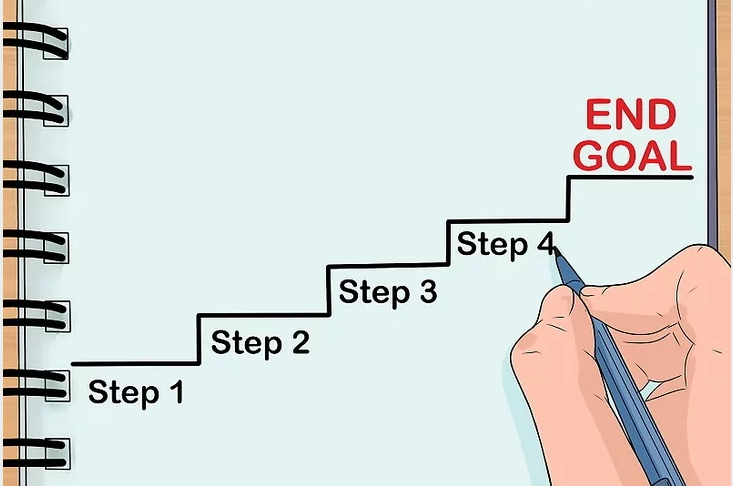Having successful online personal training business, one that will allow you to work less and earn more money, is a great goal. But, it's not going to happen overnight.
Building a profitable online business takes an investment of time and money, which is why, In this post, I’m going to share with you three strategies to pump up your offline face-to-face business, so that you can generate sufficient resources for your online fitness venture.

We're going to look at how you can utilize some simple but effective strategies to help you generate more revenue and free up more time to build your online business.
Strategy 1: Plan For Your Success
As Benjamin Franklin (supposedly) once said:
“If you fail to plan, you are planning to fail.”
I agree with Mr Franklin! I’ve seen a massive difference in the success rate of fitness professionals who plan the days, weeks, months and years ahead. They know exactly what they're building towards and they know what steps need to be taken in order to get there.
Your plan doesn’t have to be detailed or complicated, but it should include an assortment of your day-to-day activities, targets and goals.

Creating a clear action plan will hold you accountable and allow you to track your progress as your business grows.
Much like a nutritional plan or training program, a clear business plan will give you structure and measurable achievements to track your business progress. As a result, you will:
- Hold yourself accountable to the plan and the goals you set
- Place more value on your time
- Work on high income-generating actives (lead generation & sales)
- Get more done in less time, allowing you to allocate time to your online fitness business.
I recommend creating your plan on a Sunday evening or first thing on a Monday. Even, better, you can schedule in the planning process as part of your plan (clever huh?).
Want some help?
Here's a video from Dave Smith that explains how to set short- and long-term goals that produce a list of top priority items that you need to focus on in your business:
Strategy 2: Leverage Your Referral Network
Entire businesses have been built on referrals and word of mouth. Nothing beats a warm introduction from a trustworthy source.
In a perfect world, all your current clients are referring their friends, family, second cousins and co-workers. If that’s already true for you, way to go! You've worked out a great referral network.
However, if you feel like there could be some extra juice squeezed from the orange, I suggest you assume control and take a proactive approach.
When was the last time you asked your clients for a referral?
I encourage you to make this part of your ‘plan’. Speak to each of your clients one on one after their next training session. Instead of just flat-out asking for them to refer you, try a different approach:
First, encourage your clients to think of someone they think would benefit from your services. "Who needs help?"
Once they have that person in mind, then find out the best way to contact them. Allow the client to take control here: Do they suggest speaking to the potential referral first, or would they like to put you in touch directly.
Be sure to follow up and ask again, in case your client forgets or doesn’t report back with an update.
Below is a video that gives more advice on how to ask clients for a referral without sounding desperate, but the main point is simple: Ask, then ask again.
Strategy 3: Upsell Existing Clients
When a new client makes their first purchase, you might feel a mixture of satisfaction, relief and security. It’s validation that they are committed to the process and that they trust you to deliver the results you promised. But, if you sit back and celebrate that one sale, you're missing out on huge potential profits.

It's a lot easier to sell to your existing clients than it is for you to sell to a new prospect
Finding new clients is the hardest part of building your business, so rather than constantly looking for new ones, let’s look at how we can do more with those you already have.
I suggest getting a list of all your clients on paper or in a spreadsheet, where you can look objectively at each one and ask the following questions:
- Identify the ones that are training less than two times a week
- Look into their progress and the goals they want to achieve
- Can you make a case (proposal) to help them achieve those goals faster?
- Do you have clients that you could encourage to take part in a challenge or competition that will require more frequent training with you?
- Which of your clients are going elsewhere for services that you could offer?
Once you’ve competed this exercise, prepare your upsell proposals and relay them to your clients one by one. Gauge interest and feedback on your suggestions and help your clients take the necessary steps to make the new financial and training commitments.
Not only can you repeat this process every quarter and maximize the potential revenue from each client, but you will also be able to get them more profound results that make for great transformations, marketing material and more referrals!
Conclusion
If you want to build a successful online personal training business, you're likely going to have more success if your in-person practice is already thriving. The three simple strategies shared here will give you more money and more time to pursue your online dreams.




